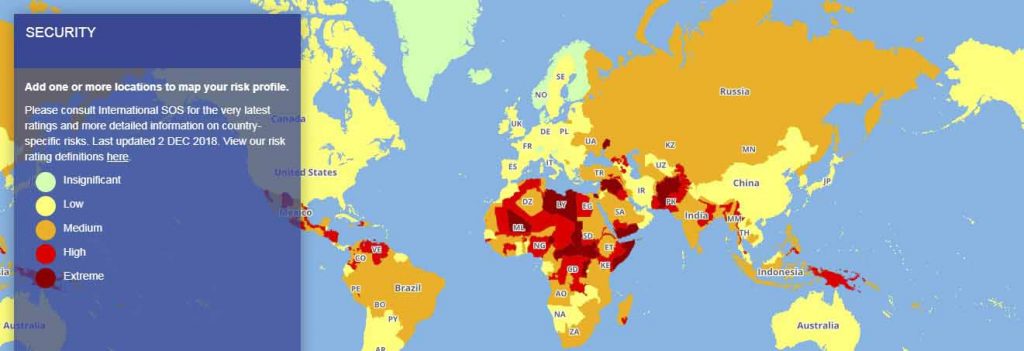The map was released in conjunction with the Ipsos MORI Business Resilience Trends Watch 2019 report. The latter shows that a significant number of business decision-makers – 43 percent – expect travel risks to rise in 2019.
Although some 47 percent think risks have increased over the past year, this represents a 16 percent decrease from 2017, when 63 percent said the risk had increased. Alongside the Travel Risk Map, a Medical Risk Map and Road Safety Risk Map for 2019 have been launched.
The medical ratings are given by assessing a range of health risks and mitigating factors, including infectious diseases, environmental factors, the standard and availability of local emergency medical and dental care, access to quality pharmaceutical supplies, the requirement for medical evacuation and cultural, language or administrative barriers.
Iran is safe at the same rate as the UK, along with most of Western and Central Europe, which is designated “low” risk status.
Highest security risk countries
Syria
Yemen
Afghanistan
Iraq
Libya
Mali
The central African Republic
South Sudan
Somalia
The Gaza Strip
Part of Egypt
Part of eastern Nigeria
Part of eastern Ukraine
Lowest security risk countries
Luxembourg
Switzerland
Slovenia
Norway (including Svalbard)
Denmark (including the Faroe Islands)
Finland
Greenland
Iceland
Seychelles
Cape Verde
Source: The Independent

I traveled more than 87 countries alone but I can say Iran is the safest country everyone can visit even for a solo female traveler.
Iranian are wonderful and extremely friendly…